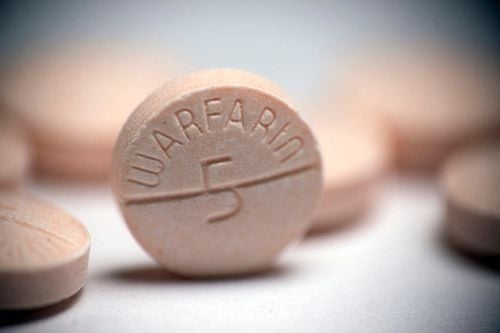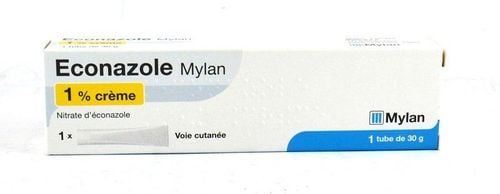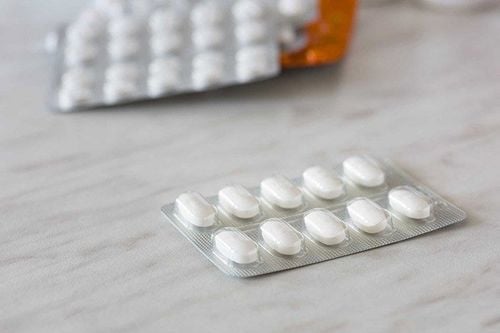This is an automatically translated article.
Terbiskin topical is a broad spectrum antifungal. The drug is used in the treatment of fungal skin infections caused by Trichophyton, the genus of Candida and vitiligo... The following article provides readers with some information on indications, usage and notes when using the drug. Terbiskin.
1. What is Terbiskin 1% topical?
Terbiskin 1% has the main ingredient is Terbinafin hydrochloride. The drug is used to treat fungal infections of the skin and extremities as well as tinea versicolor. Terbinafine is a broad-spectrum antifungal drug of the Allylamine group. Depending on the drug concentration and experimental fungal strains, Terbinafine has different fungicidal or fungicidal effects.
Terbinafine has fungicidal activity against many fungi, including dermatophytes such as Trichophyton mentagophytes, T. verucosum, T. rubrum, Microsporum gypseum, Microsporum nanum, filamentous fungi such as Aspergillus, dimorphic fungi such as Blastomyces, Epidermophyton floccosum, Candida albicans and Scopulariopsis brevicaulis.
Terbinafin acts at an early stage in fungal sterol biosynthesis, an important component of fungal cell membranes. This causes ergosterol deficiency and intracellular accumulation of squalene, leading to fungal cell death.
Terbinafin inhibits the enzyme squalene epoxidase in fungal cells, which is not bound to the cytochrome P450 system.
Terbiskin skin cream is made in the form of a cream, a smooth, homogeneous substance, with a white to ivory color and a characteristic odor. Terbiskin medicine is packaged in a box with 1 aluminum tube containing 15g of cream.
2. Indications and contraindications for topical Terbiskin 1%
Indications:
Treatment of fungal skin infections caused by Trichophyton (such as T. mentagrophytes, T. rubrum, T. violaceum, T. verrucosum); Microsporum canis and Epidermophyton floccosum. Treatment of fungal skin infections caused by the genus Candida (such as Candida albicans). Treatment of tinea versicolor caused by Pityrosporum orbiculare (or Malassezia furfur). Contraindications:
Terbiskin 1% topical is contraindicated in cases of allergy or hypersensitivity to Terbinafine or any of its ingredients. 3. How to use the drug Terbiskin 1% Terbinafine 1% for external use. Before applying the medicine, it is necessary to wash and dry the infected skin area.
Lightly apply a thin layer of Terbiskin 1% medicine to the infected and surrounding skin. In case patients with dermatitis caused by rubbing (between fingers and toes, mammary glands, buttocks, groin) should cover the area with Terbiskin ointment, especially at night.
Use Terbiskin at the correct times of the day. Forgetting to use Terbiskin 1% medicine during treatment can lead to re-infection of the fungus.
To date, clinical experience with Terbinafine in children is limited, therefore Terbiskin is not recommended for use in children under 16 years of age.
Dosage: Only use Terbiskin in adults, apply the drug 1-2 times / day during the course of treatment.
Treatment time:
Skin thrush, inguinal fungus: Use the drug for 1-2 weeks. Foot fungus: 1 week. Candida on the skin, vitiligo: 2 weeks. Clinical symptoms usually improve after a few days of taking the drug. If the drug is applied infrequently or if it is stopped early, there is a risk of recurrence of the fungal infection.
If there is no clinical improvement after more than 2 weeks of use, the initial diagnosis should be re-evaluated. Terbiskin should not be used for more than 4 weeks.
4. Terbiskin drug overdose and treatment
Terbiskin is applied topically to the skin, less absorbed by the body, so there is less chance of drug overdose reactions. However, an overdose has occurred if an amount of 30g Terbiskin cream is swallowed, equivalent to 300mg Terbinafin hydrochloride, comparable to a 250mg tablet of Terbinafin hydrochloride taken orally in adults.
Terbiskin overdose symptoms: Headache, dizziness, epigastric pain, nausea.
In case of an overdose of Terbiskin, it is necessary to stop using the drug and go to a medical facility for appropriate treatment. Terbinafine overdose treatment mainly uses activated charcoal to eliminate the drug from the body and provide symptomatic treatment.
5. Undesirable effects when using the drug Terbiskin 1%. Undesirable effects when using Terbiskin topical are common in the skin such as peeling, itching, scaling, skin pigmentation disorders, erythema, burning sensation in the application area. In rarer cases, contact dermatitis, eczema, dry skin, increased risk of potential fungal infection may occur.
Terbinafine drug side effects can be seen in the eyes or in some cases cause immune disorders of the body.
When experiencing side effects of Terbiskin topical, it is necessary to stop using the drug, notify your doctor or go to a medical facility for timely treatment.
6. Some notes when using the drug Terbiskin
Only use Terbiskin medicine topically, do not use it by mouth or vaginally. Do not let Terbiskin medicine come into contact with eyes, nose, mouth, mucous membranes; In case the drug accidentally gets into the eyes, immediately wash the eyes with clean water. Do not cover the application area and wear tight clothing. Discontinue use of Terbiskin if skin rash develops. Terbiskin topical should be used with caution in patients with psoriasis or who are sensitive to allylamine antifungals. Terbiskin topical 1% contains cetostearyl alcohol which may cause local irritation such as dermatitis. Store Terbiskin 1% medicine in a dry place, protected from light and cool, at a temperature not exceeding 30oC. Keep Terbiskin out of the reach of children. Pregnancy: There are not enough studies on the safety and efficacy of this drug in pregnant women. Terbiskin should be used during pregnancy only if the benefits outweigh the risks. Lactation: Terbinafine is excreted in breast milk and should not be used in lactating women. In addition, do not let the baby come into contact with the mother's damaged skin.
7. Drug interactions There are not enough studies on interactions between Terbiskin and other drugs. Therefore, tell your doctor or pharmacist what drugs, including supplements, you are taking to be considered and adjusted appropriately.
In summary, Terbiskin 1% topical is a broad-spectrum antifungal; Used in the treatment of fungal skin infections caused by Trichophyton, genera of Candida and tinea versicolor. Use Terbiskin for the full duration of treatment, do not forget to use the drug to avoid re-infection.
Please dial HOTLINE for more information or register for an appointment HERE. Download MyVinmec app to make appointments faster and to manage your bookings easily.













